To my other TR6 Pages
November 4, 2016
Heater Install
So I dragged out the refurbed heater, which has been on a shelf for nearly two years.
The
first thing I noticed, other than the unit being covered with dust, was
that the foam cowl seal had let go. This seal, as supplied by at
least one of the big three, comes as a short length of closed cell
foam weather stripping that can be bought at any big box home store.
The 1000% markup aside, the adhesive isn't good enough to hold
the strip to the tight curve for very long. If I had installed
the heater right away, the story might have been different.
In
the end, I thought a better solution was to duplicate the original foam
ring. I removed what was left of the old adhesive on the
overpriced foam strip, put some contact ahesive on its ends, and joined
them to a ring that would snugly slip over the heater's inlet opening.


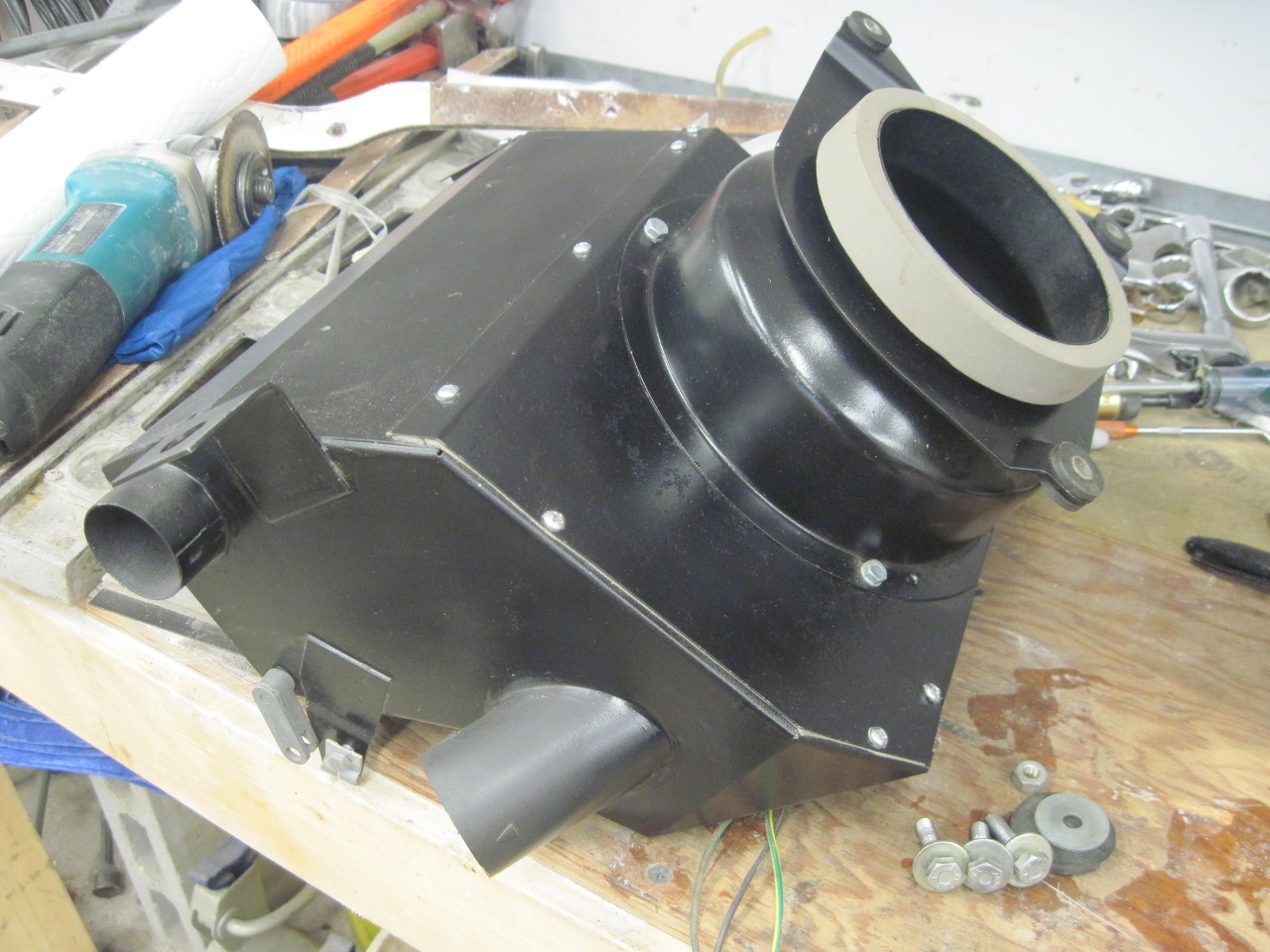
I
wasn't sure if the heater would interfere with installation of the
bulkhead hose connectors, so I looked at that next. The original
was in pretty bad shape, with rust perforations in a few places.
The new one I bought looked a lot better, but I wish I'd been
able to find a stainless version. Note that in the last pic below, the unit is installed upsidedown. I didn't catch that until I tried to hook up the hoses.

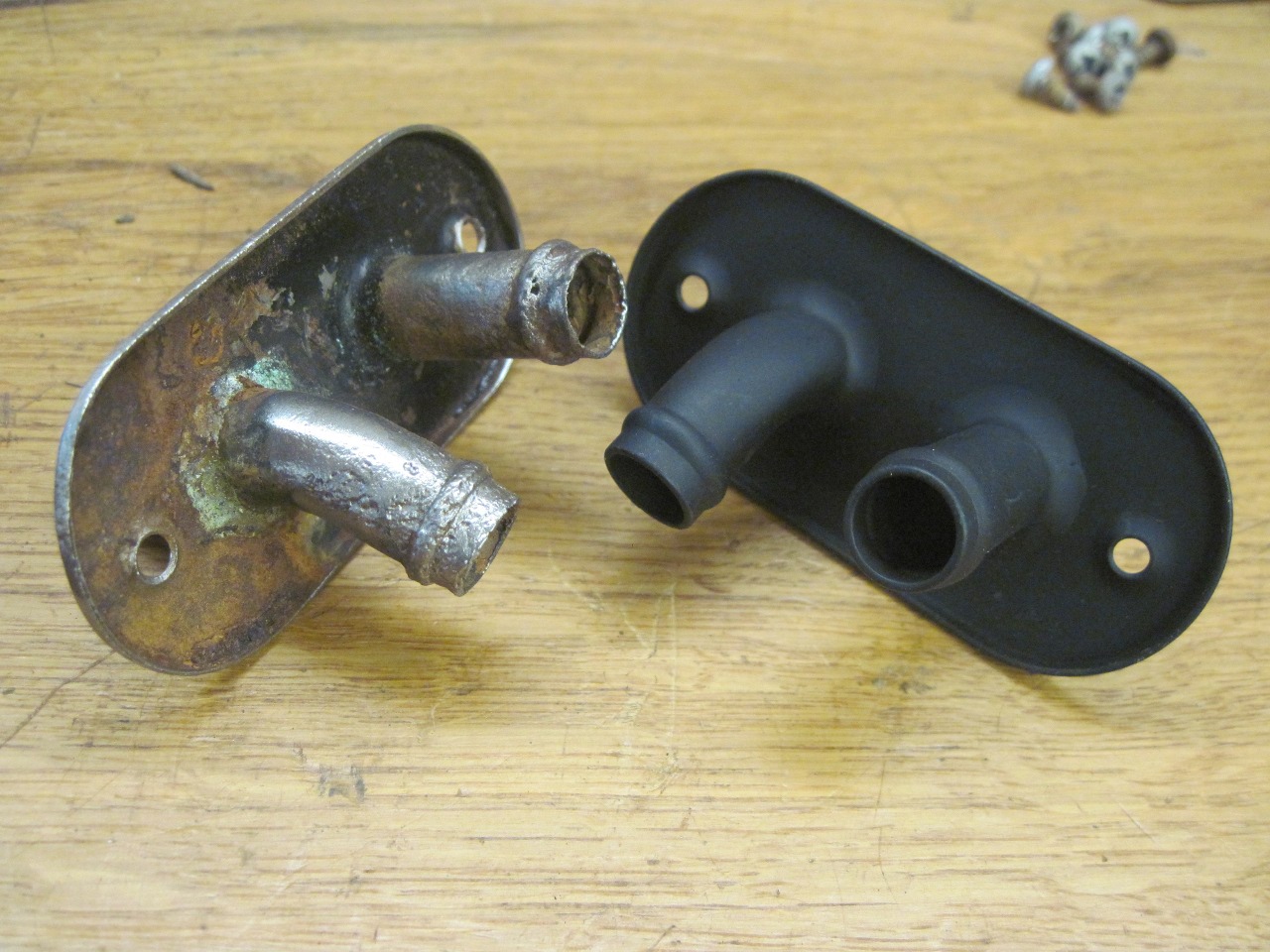
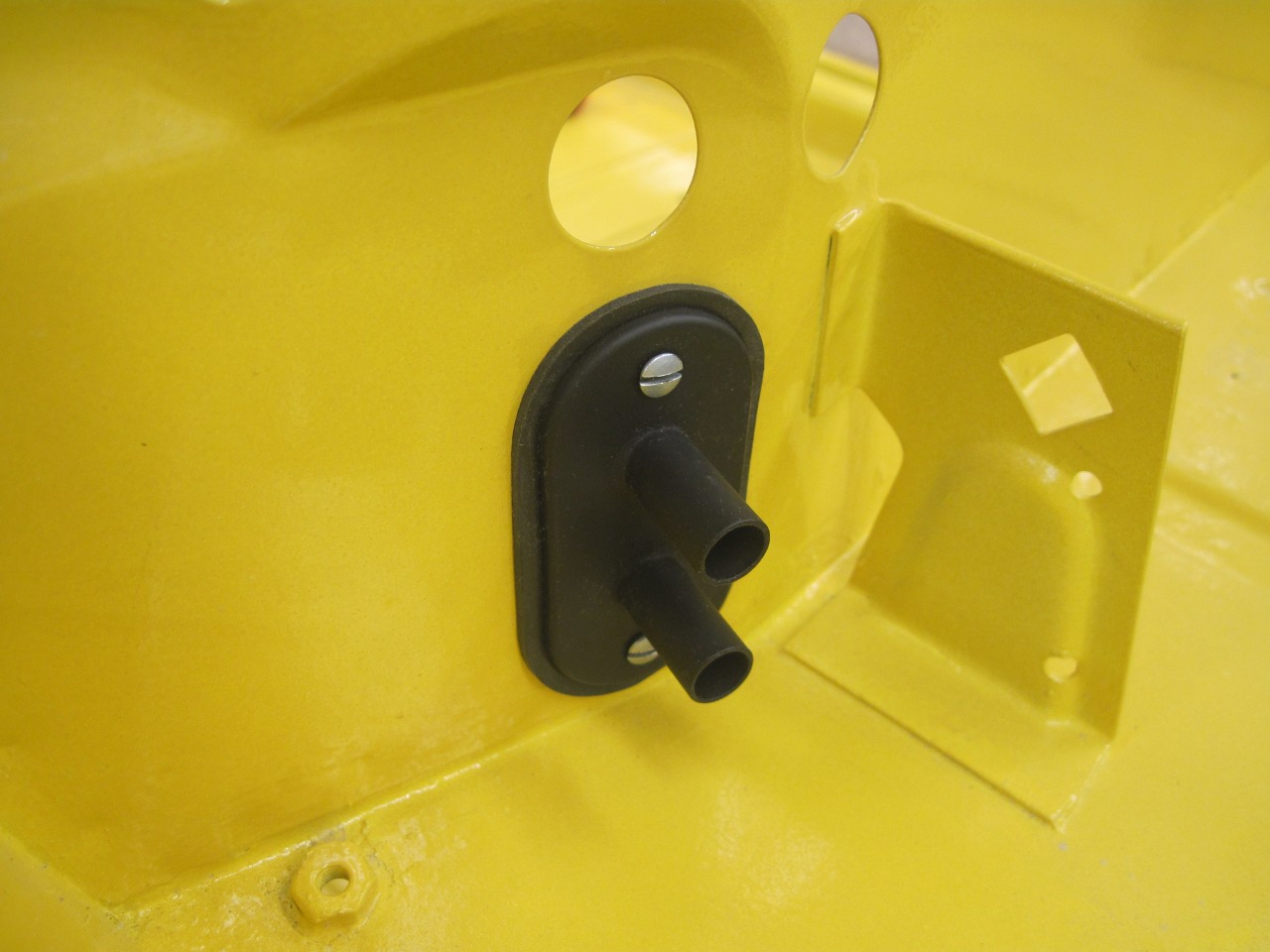
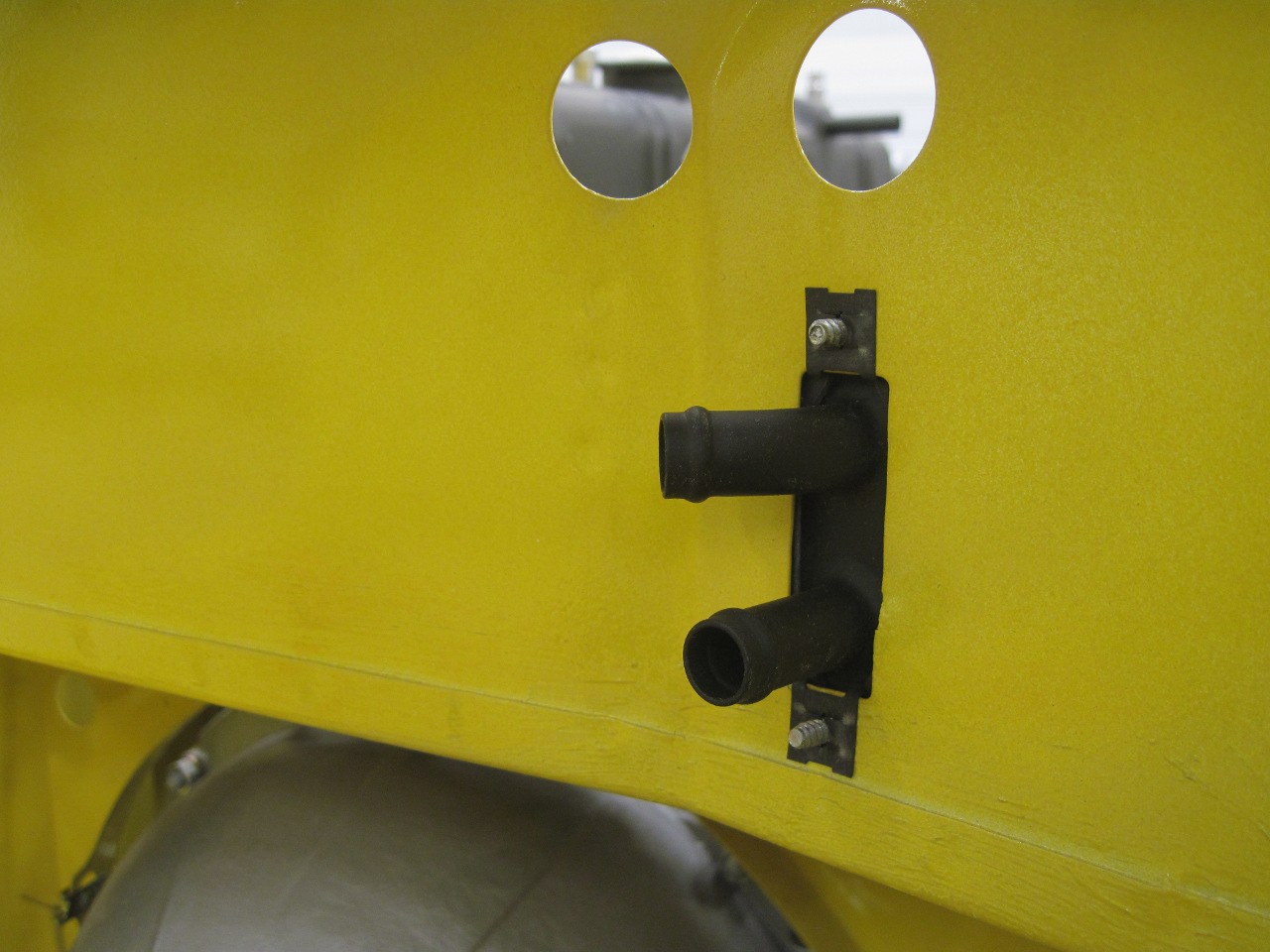
Before
actually hanging the heater, I wanted to apply a panel sound deadening
treatment to the firewall behind it while I still had access. I
was a little na´ve about this at first. I assumed that the only
way to deaden a panel was to increase its mass and reduce its
springiness. This was the thinking behind the bituminous pads
applied to various panels of the TR6 at the factory. The pads are
relatively dense, and fairly limp (at least when new). The extra
mass lowers the resonant frequency of the panel, and the soft material
absorbs the energy of flexing. I learned that a more modern
answer to vibration and sound deadening is Constrained Layer Dampening
(CLD). A CLD system consists of two metallic layers and a
so-called "visco-elastic" material, which is constrained between them.
This material is like a very soft, almost gooey rubber. In
an automotive application, one of the metallic layers is a panel in the
car, and the other is typically a thin layer of aluminum.
Vibration or sound frequencies distort the soft material which
absorbs the energy, turning it into a small amount of heat. A CLD
product can allegedly give the same amount of sound and vibration
damping as a bituminous or similar pad with less weight and less
thickness. I was skeptical at first, but the anecdotal
evidence is strong, and the science seems solid.
The
downside, however, is cost. Premium brands of these products can
approach $10 per square foot in smaller quantities. I bought a
few square feet of a slightly cheaper offering just to try it out.
This
product came in one square foot sheets, and the gooey constrained layer
also serves as a pretty effective adhesive. It is probably less
than 1/16" thick, and is pliable enough to fit to moderate countours.
Because of the way it works, it's important that the sheets have
as complete and intimate contact with the steel panel as possible.
It reportedly isn't necessary to cover 100% of a panel to reduce
its vibration. In fact, one source claimed that covering just a
third or so of a panel gets most of the damping effect. I assume
which third makes a difference.
Here is the firewall panel behind the heater with the sound mat applied.
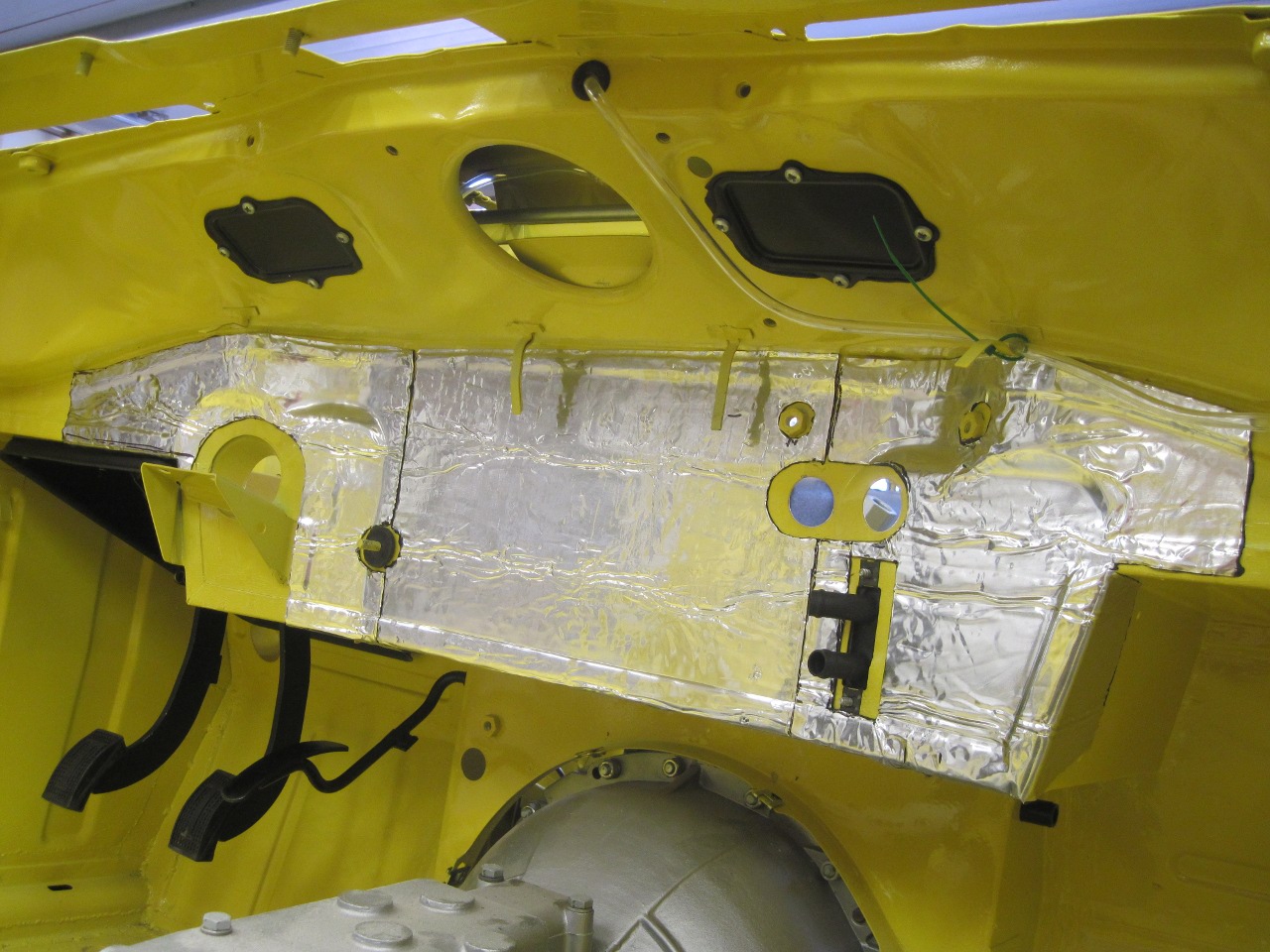
I'll
add to the record of anecdotal evidence. In a subjective before
and after test, and comparisons with treated and untreated panels, I
can say that the treated panels definitely have a "deader" sound when
thumped.
Finally, the heater was offered up and bolted in.


I'm
convinced enough of the effectiveness of these CLD products for sound
deadening that I'll probably use them in other areas of the car.
One other claim made by some of the purveyors of these products
is that they also have high resistance to heat transmission.
This, I'm still skeptical of.
Comments to Ed at elhollin1@yahoo.com
To my other TR6 Pages